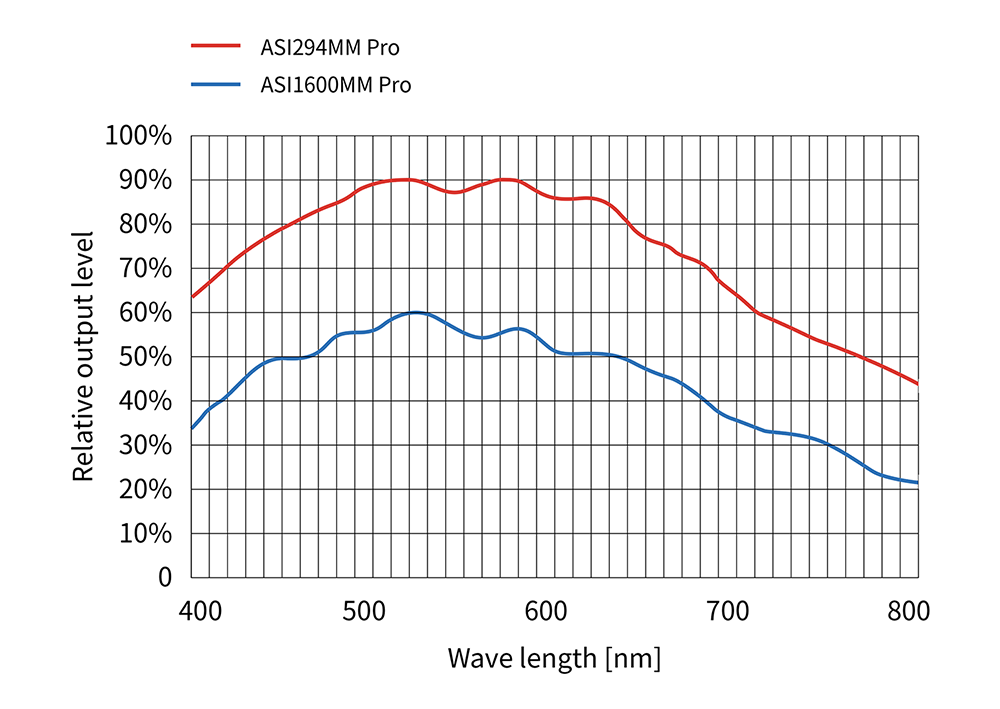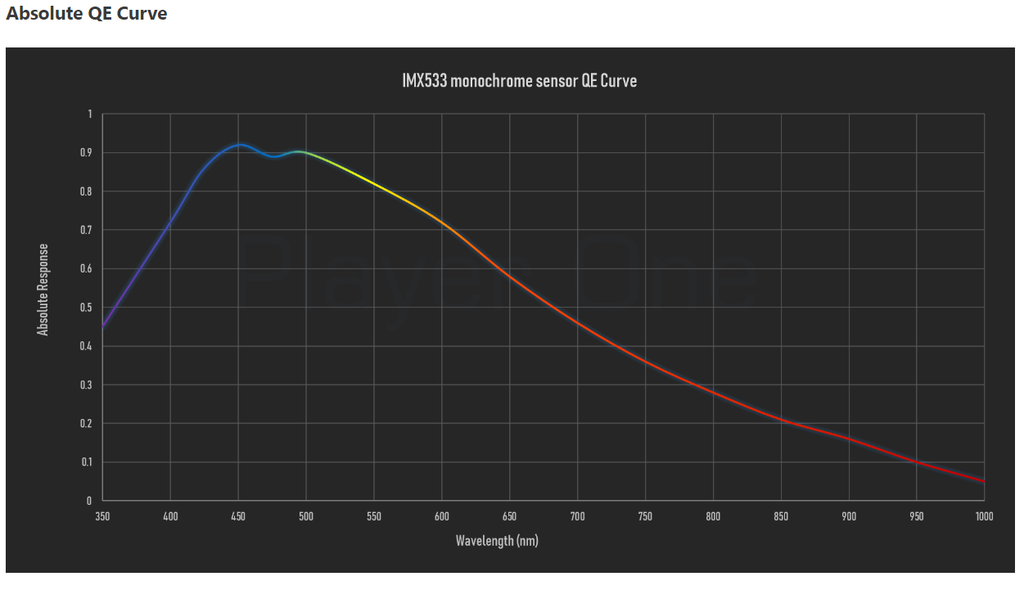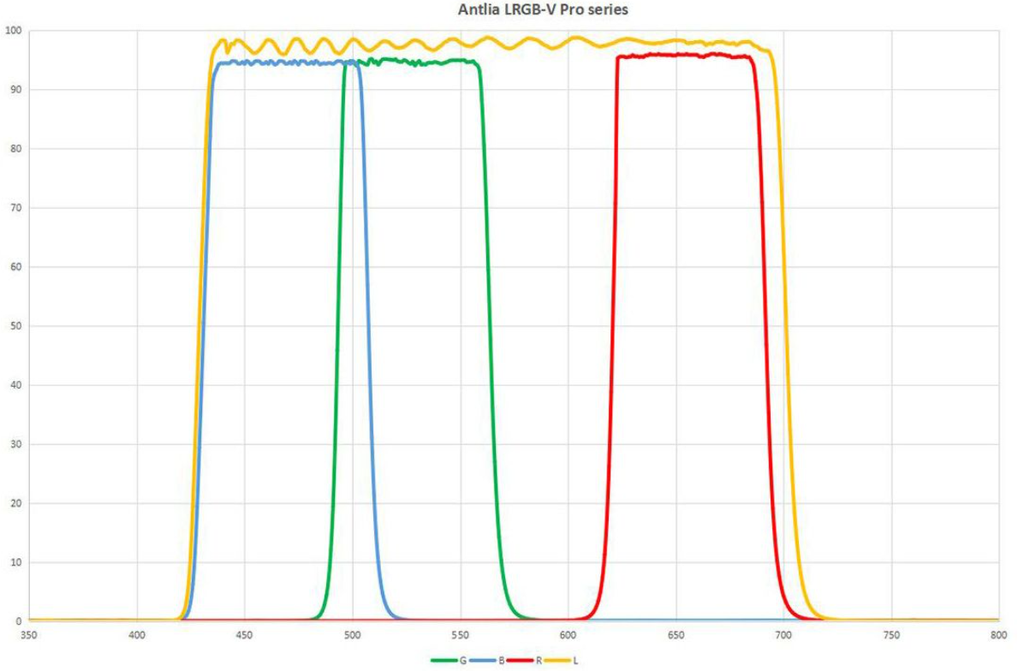I just got a LRGB set of Antlia V-Pro filters (1.25") and put them in my PlayerOne filter wheel.
I put my flat panel on top of my telescope and I ran the Nina auto exposure flat wizard and it came up with the following exposure times for my filters:
L: 0.60 seconds
R: 6.13 seconds
G: 1.88 seconds
B: 2.51 seconds
Now bear in mind this is a constant brightness light source from a flat panel.
I would expect all 3 RGB Antlia V-Pro filters to have roughly the same exposure time to reach 50% ADU since their bandwidths are fairly equal in size.
Do other people experience the too or do I have a bad R filter?
|
You cannot like this item. Reason: "ANONYMOUS".
You cannot remove your like from this item.
Editing a post is only allowed within 24 hours after creating it.
You cannot Like this post because the topic is closed.
Copy the URL below to share a direct link to this post.
This post cannot be edited using the classic forums editor.
To edit this post, please enable the "New forums experience" in your settings.
I think this is some quirk of the QE/sensitivity curve of your sensor. They are not uniformly sensitive across the entire visible spectrum. See diagram below I picked off google as an example for the 294MM and 1600MM  |
You cannot like this item. Reason: "ANONYMOUS".
You cannot remove your like from this item.
Editing a post is only allowed within 24 hours after creating it.
You cannot Like this post because the topic is closed.
Copy the URL below to share a direct link to this post.
This post cannot be edited using the classic forums editor.
To edit this post, please enable the "New forums experience" in your settings.
I have to expose my Chroma R filter a little more than the others too.
Not only the sensor as mentioned, but how sure are you that your flat panel is sending equal signal across all wavelengths.
|
You cannot like this item. Reason: "ANONYMOUS".
You cannot remove your like from this item.
Editing a post is only allowed within 24 hours after creating it.
You cannot Like this post because the topic is closed.
Copy the URL below to share a direct link to this post.
This post cannot be edited using the classic forums editor.
To edit this post, please enable the "New forums experience" in your settings.
Probably your light source. Doubt it has anything to do with your filters.
|
You cannot like this item. Reason: "ANONYMOUS".
You cannot remove your like from this item.
Editing a post is only allowed within 24 hours after creating it.
You cannot Like this post because the topic is closed.
Copy the URL below to share a direct link to this post.
This post cannot be edited using the classic forums editor.
To edit this post, please enable the "New forums experience" in your settings.
I've got the Player One Ares M Pro   |
You cannot like this item. Reason: "ANONYMOUS".
You cannot remove your like from this item.
Editing a post is only allowed within 24 hours after creating it.
You cannot Like this post because the topic is closed.
Copy the URL below to share a direct link to this post.
This post cannot be edited using the classic forums editor.
To edit this post, please enable the "New forums experience" in your settings.
Your assumption that all filters should reach 50% in the same amount of time is incorrect. You need to consider the QE curve of the sensor as well as the light source for your flats. For example, I have the Poseidon-M and Astronomik Deep Sky RGB filters. I use a Gerd Neumann Aurora flat panel. LRGB flats I took: L - 0.30" R - 2.35" G - 0.83" B - 0.71" The variation you're experiencing is perfectly normal. Nothing wrong with your filters  |
You cannot like this item. Reason: "ANONYMOUS".
You cannot remove your like from this item.
Editing a post is only allowed within 24 hours after creating it.
You cannot Like this post because the topic is closed.
Copy the URL below to share a direct link to this post.
This post cannot be edited using the classic forums editor.
To edit this post, please enable the "New forums experience" in your settings.
You are looking for a problem where none exists, just start imaging.
|
You cannot like this item. Reason: "ANONYMOUS".
You cannot remove your like from this item.
Editing a post is only allowed within 24 hours after creating it.
You cannot Like this post because the topic is closed.
Copy the URL below to share a direct link to this post.
This post cannot be edited using the classic forums editor.
To edit this post, please enable the "New forums experience" in your settings.





